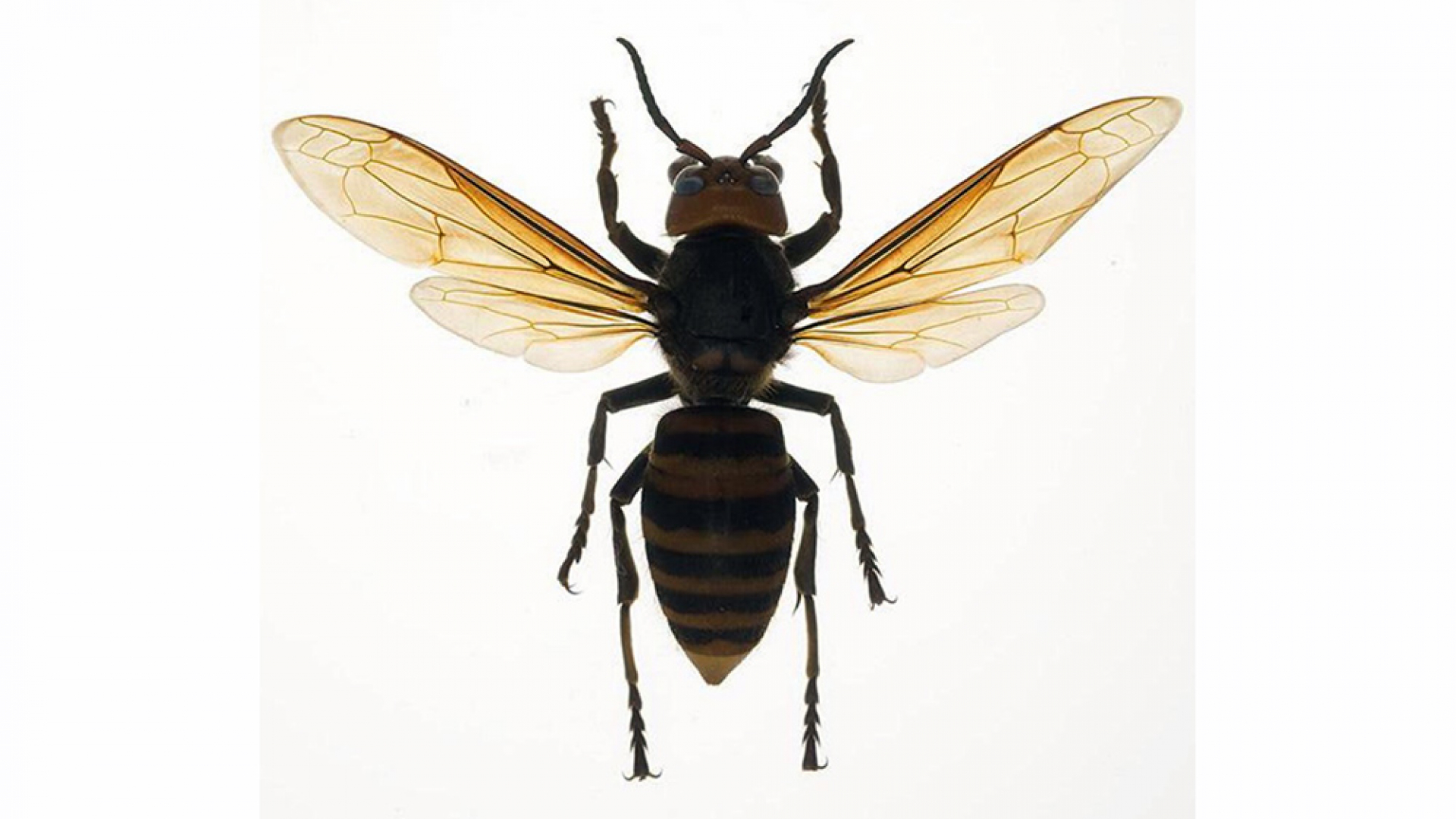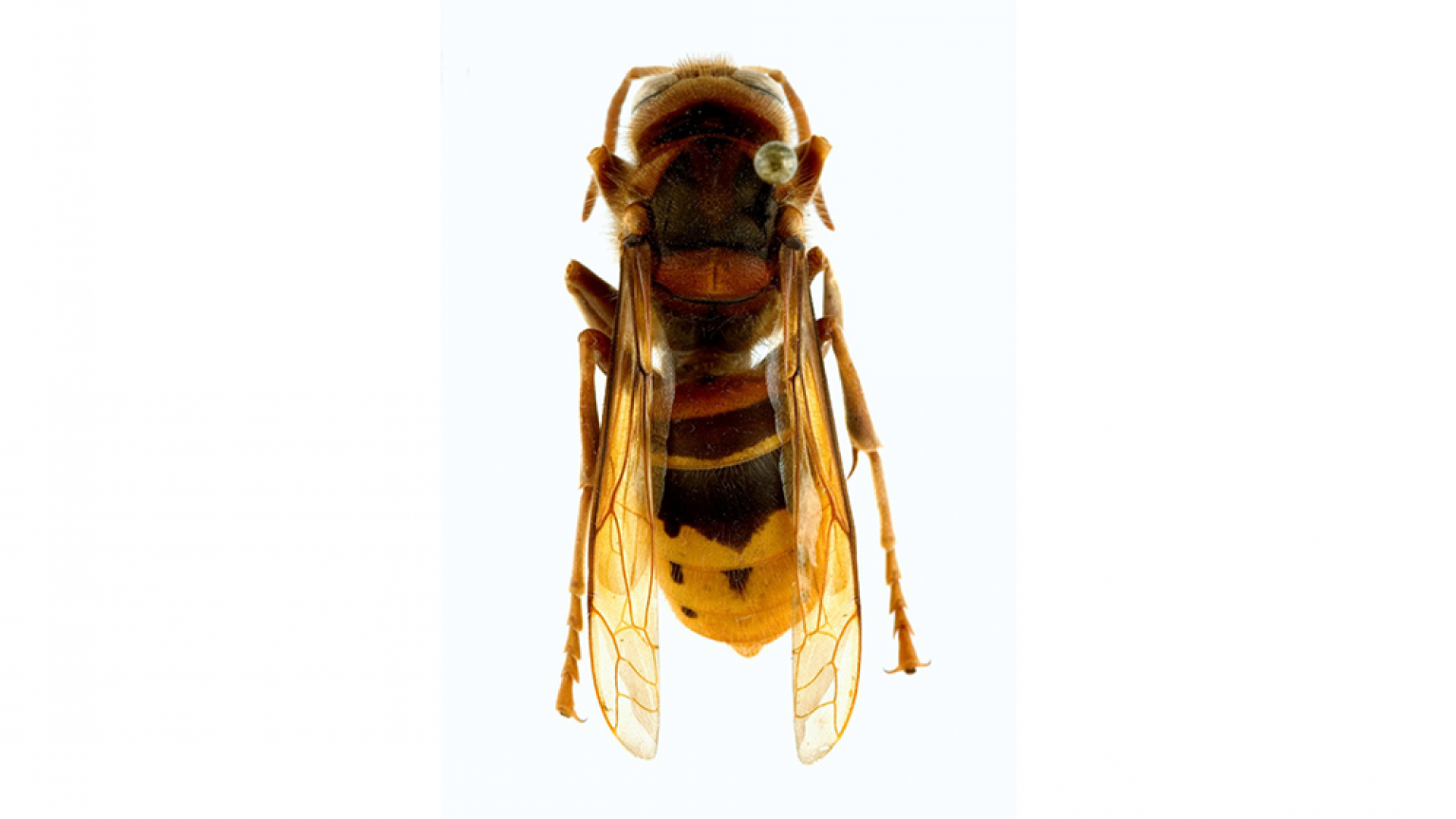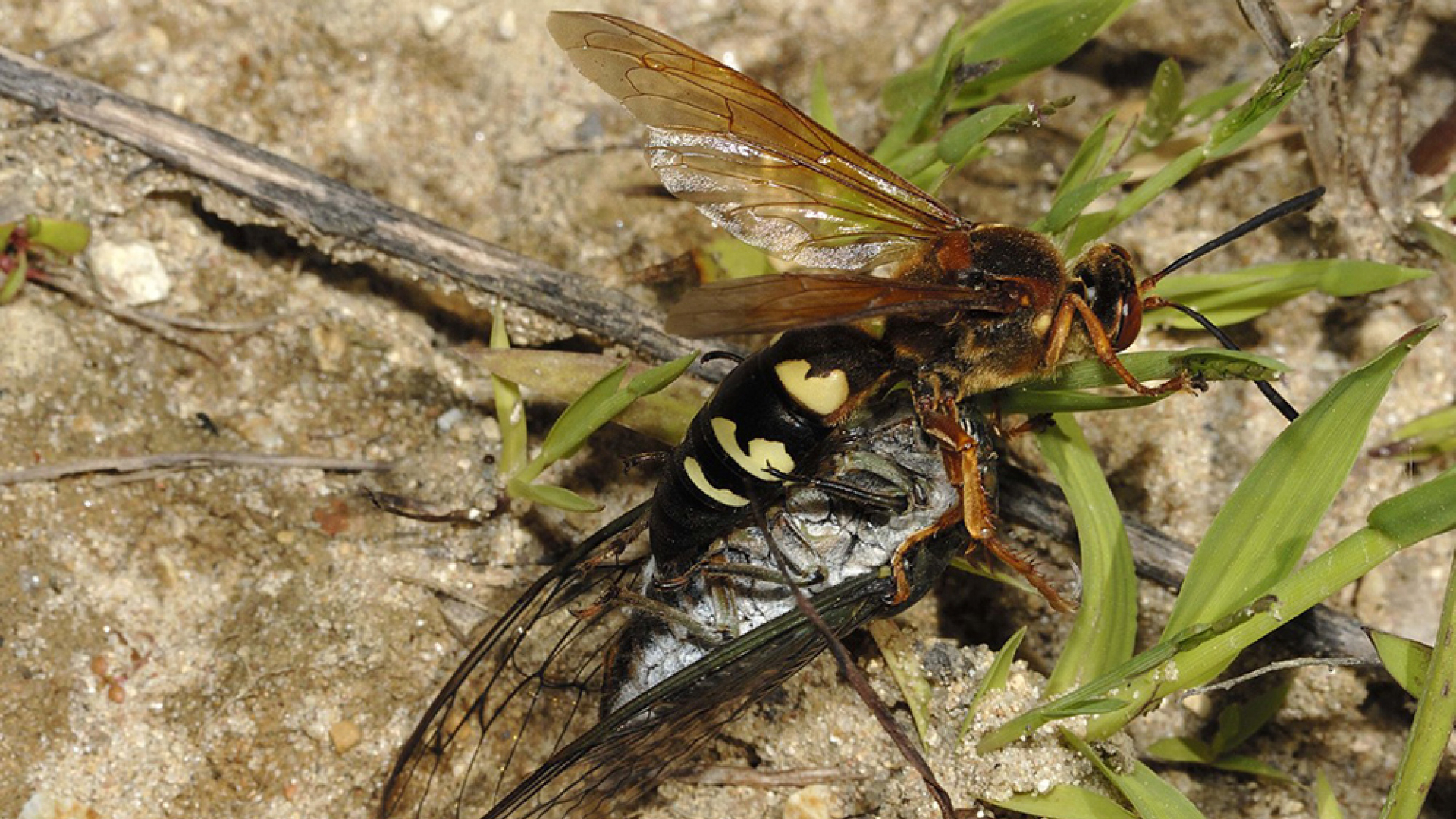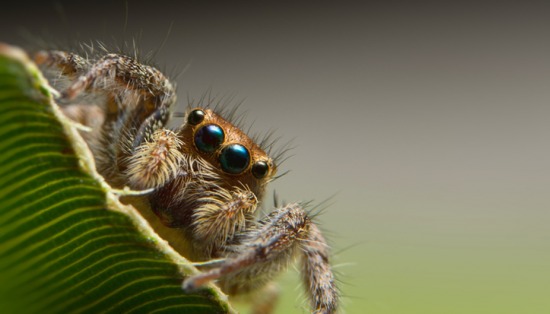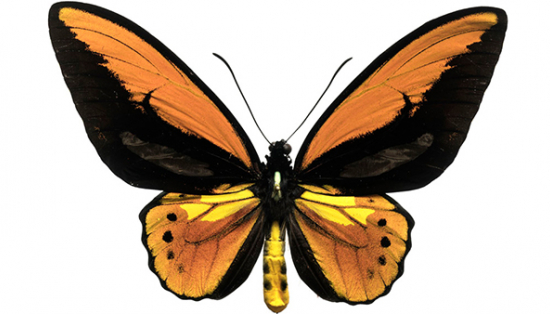Recent media reports about the arrival of Asian giant hornets (Vespa mandarinia) (also known as Japanese giant hornets and captioned by the media as the murder hornets) in North America have focused on their large size, nasty sting and potential to decimate honey bee (Apis mellifera) colonies. While the introduction of alien species is never welcome news, these invaders have been found in just a handful of locations along the southern coast of British Columbia and neighbouring Washington state.
Efforts are underway to contain these initial populations, since their spread could pose a serious threat to honey bees and the beekeeping industry. However, this will not be an easy task as previous control efforts have had limited success. Equally worrisome for the public are the enormous size (the largest hornet known!) and painful sting of these insects, though their threat to humans is largely overblown. So, how worried should we be in Ontario? The short answer is, not very.
There were supposed sightings of Asian giant hornets in the Niagara region in 2018, which resulted in the shutdown of recreational facilities and the application of pesticides, however the ‘hornets’ in question weren’t hornets at all, but actually a harmless species of digger wasps called the Eastern cicada-killer (Sphecius speciosus).
Until now, there was just one other species of true hornet in North America — the European hornet (Vespa crambo), originally introduced by settlers in the mid 1800s. This particular alien species is much more established, with a distribution that now includes much of eastern North America. Whether or not the Asian giant hornet can expand its range is still an open question. First, it would need to get across the Rocky Mountains, and then survive the relatively frigid winters of the prairies before reaching Ontario — no easy feat!
Nonetheless it’s important to continue control efforts while also monitoring the potential expansion of this alien species from its current toehold in the Pacific Northwest. In both cases, sound taxonomy is key. After all, we don’t need the stress and expense of another control effort directed at a harmless local species like the cicada killer.
The large size (ca. 4 cm) and fearsome appearance of Asian giant hornets (Figure 1) distinguishes them from most other wasps you’re likely to encounter in Canada. In Ontario, the only oversized wasps they might be confused with are the previously mentioned European hornet and Eastern cicada-killer wasp. The European hornet is a closely related species that is similar in overall appearance (Figure 2), but somewhat smaller (3.5 cm), with a golden-yellow (as opposed to an orange) head, and irregularly-shaped (as opposed to evenly shaped) black stripes on the abdomen. In contrast, the Eastern cicada-killer is a solitary hunting wasp that bears little resemblance to its more distant hornet cousins (Figure 3). Further, the largest cicada killers are even larger (5 cm) than Asian giant hornets.
The takeaway message? If you encounter a large scary looking wasp when you’re out and about in Ontario this summer, you can take some comfort in the idea that it is far more likely to be a European hornet or an Eastern cicada killer (aka nothing to be concerned about) rather than an Asian giant hornet.
If you can overcome your fear, consider snapping an image and submitting it to iNaturalist for confirmation by experts. Proper identification is crucial for tracking changes in a species distribution, but it can also relieve unfounded fear and prevent unneeded control measures.

